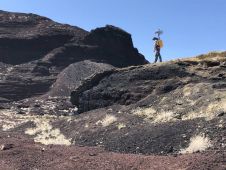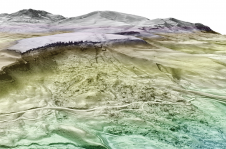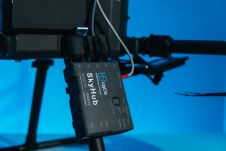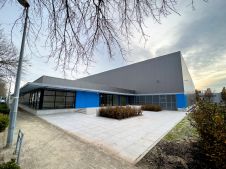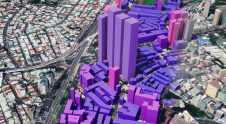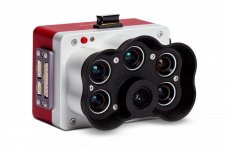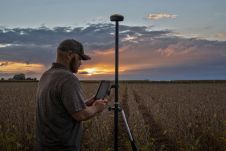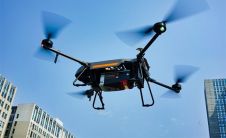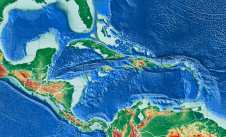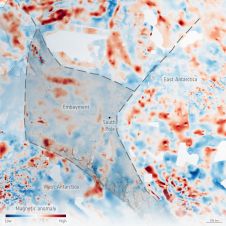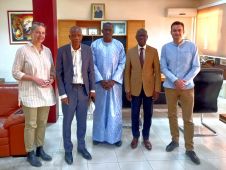5个问题...法比奥·雷蒙迪诺(Fabio Remondino)
我们借此机会问了法比奥·雷蒙迪诺(Fabio Remondino)五个问题。他将在捷克共和国布拉格的ISPRS大会上主持Eurosdr:NMCAS的创新技术和方法论。
遥感和摄影测量社区的成员今年将在布拉格举行,为ISPRS国会聚会。您最期待哪些亮点?我相信国会将在硬件,软件和处理水平上重点介绍最新的开发和产品。根据提交的论文,我预见了与摄影测量和遥感中建模和分析的方法论和计算方面有关的演示。我特别期待有关传感器表征和建模,自动取向,密集匹配,点云分割和土地分类的演讲。我相信国会将很好地总结遥感,摄影测量,计算机视觉和图像分析的最新趋势和当前趋势。
我还期待着技术委员会结构的变化,重组对五个委员会以及所有新工作组的创建。这是保持ISPR良好势头的基本基础,因此我希望所有新的技术委员会总裁都幸运。
How are you involved in this edition of the congress?As president of Technical Commission V for the past 4 years, I was responsible, together with the local organisers in Prague and the members of the international programme committee, for the Commission papers submissions, reviewing and acceptance process. Moreover, I liaised with CIPA and EuroSDR to have their Special Sessions organised at the Congress. Interdisciplinarity and openness to the other sister societies and communities are fundamental for better advances in R&D.
您自己的专业知识领域,即基于现实的测量和3D建模的最激动人心的趋势是什么?On the one hand, we have recently witnessed a continuous production of sensors for data collection and algorithms for data-processing and visualisation and, on the other hand, a democratisation of 3D modelling, particularly due to more affordable active range sensors and to the large automation within image-based approaches. This had led to exciting products and solutions (including, among others, RGB-sensors, oblique aerial systems, mobile 3D tools, BIM, etc.) and to an abundance of 3D data, often shared and accessible online inside webGIS or repositories solutions.
如果这是电梯的音高,您将如何促进欧洲奖?EuroSDR is a non-profit European organisation that brings together mapping / cadastre agencies & academia for the purpose of applied research methods, systems and standards for the acquisition, processing, production, maintenance, storing and dissemination of core geospatial data and information. This allows agencies to play their role as content providers and to rise problems from the production units that are solved with researchers in a collaborative mode. With this close and institutional collaboration between practice and research, EuroSDR is unique. The research activities of EuroSDR are carried out through projects and workshops. This is executed by EuroSDR alone or in collaboration with other organisations and companies. EuroSDR is thus a recognised provider of research-based knowledge to a Europe where citizens can readily benefit from geographic information.
As a member of the EuroSDR executive management team, what is your specific role within the organisation?EuroSDR覆盖整个geoinform的研究ation management cycle, ranging from the raw data acquisition to the end-user of this information. EuroSDR is divided in six Commissions that serve as a catalyst between the research projects and the EuroSDR network. I was appointed as chairman of Commissions I in 2013. EuroSDR Commission I wants to explore, test and validate platforms, sensors and algorithms to acquire geo-spatial data, with emphasis on accuracy, reliability and standardisation of data-processing procedures. Commission I is actually running two research activities on oblique aerial camera systems and on high-resolution satellite for mapping purposes. Other activities run in the past include UAV platforms for mapping purposes, digital airborne camera calibration, investigation on medium format cameras, radiometric aspects of digital photogrammetric images, etc.
法比奥·雷蒙迪诺(Fabio Remondino)is senior researcher and head of the research unit at the Bruno Kessler Foundation (FBK) of Trento (Italy), a public research centre that strives for scientific excellence, innovation and technology transfer in the fields of advanced computer science, geospatial technologies, microelectronics, physics and human sciences.


